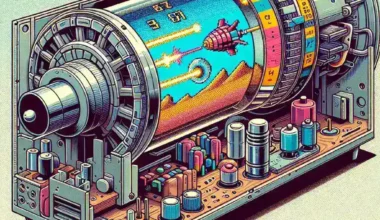Cathode Ray Tubes (CRTs) played a pivotal role in the development and functioning of radar displays for several decades. Emerging during World War II, CRTs became an integral component in various applications due to their unique capabilities, which were unmatched by any other technology at the time. But what were the specific reasons that CRTs became the technology of choice for radar displays? Let’s delve into the reasons behind their widespread use.
| Advantages | Details |
|---|---|
| Visual Clarity | High resolution and sharp image quality |
| Response Time | Instantaneous phosphor-based display |
| Durability | Long lifespan and robust structure |
| Versatility | Compatible with various signal types |
Introduction to CRT Technology
CRTs function by using electron beams to illuminate phosphorescent materials on the screen, creating images based on electrical signals. This technology was groundbreaking since it allowed for real-time visual representation of data, which was essential for radar systems used in military and aviation sectors.
Key Components of CRT
- Electron Gun: Emits electrons that strike the phosphor-coated screen.
- Phosphor Screen: Produces visible light when struck by electrons.
- Deflection System: Directs the electron beam to specific points on the screen.
Visual Clarity and Sharpness
One of the primary reasons CRTs were preferred for radar displays was their superior visual clarity. The high resolution and sharpness provided by CRTs were crucial for accurately interpreting radar data. Pilots and radar operators needed clear and detailed images to make precise decisions in real-time environments.
High Resolution
CRTs could display detailed images with high resolution, making it easier to identify objects and their movements. This was particularly important in scenarios where even minute details could make a significant difference.
Brightness and Contrast
The ability of CRTs to produce high brightness and excellent contrast ratios ensured that the images remained clear even in varying lighting conditions. This feature was vital for radar operators working in different environments, from brightly lit control rooms to dimly lit aircraft cockpits.
Immediate Response Time
Another significant advantage of CRTs was their instantaneous response time. Unlike modern displays that might have minimal lag, CRTs operated in real-time, which was essential for radar applications where delays could result in catastrophic consequences.
Real-Time Data Representation
The phosphor coating on the CRT screen would light up immediately upon being struck by the electron beam, ensuring that the data was displayed without any lag. This was critical for radar systems that had to monitor rapidly changing environments.
Durability and Longevity
CRTs were built to last. Their robust design and long operational life made them a reliable choice for radar systems that needed to function continuously over extended periods. This durability meant lower maintenance costs and higher reliability, which were significant factors in military and aviation applications.
Robust Construction
The sturdy construction of CRTs ensured that they could withstand harsh conditions, including extreme temperatures, vibrations, and shocks. This made them ideal for use in military radar systems that operated in challenging environments.
Longevity
The longevity of CRTs meant fewer replacements and repairs were needed, reducing downtime and ensuring that radar systems could operate without interruption.
Versatility and Compatibility
CRTs were highly versatile and compatible with various signal types, including analog signals, which were prevalent in early radar systems. This versatility meant that CRTs could be easily integrated into a wide range of radar applications.
Analog Signal Handling
CRTs were particularly well-suited for handling analog signals, which were the standard in early radar technology. This compatibility made them an ideal choice for initial radar systems and ensured a smooth transition as technology evolved.
Adaptability
The adaptable nature of CRT technology allowed it to be used in different radar systems, from ground-based installations to airborne units. This flexibility made CRTs a universal component in radar technology.
Conclusion
In conclusion, CRTs were used in radar displays due to their superior visual clarity, instantaneous response time, durability, and versatility. These characteristics made them the best technology for radar systems that required real-time data representation, reliable performance, and high-resolution display. While advancements in display technology have led to the adoption of more modern alternatives, the impact of CRTs on the development of radar systems remains significant.






